Music
Trailers
DailyVideos
India
Pakistan
Afghanistan
Bangladesh
Srilanka
Nepal
Thailand
Iraq
Iran
Russia
Brazil
StockMarket
Business
CryptoCurrency
Technology
Startup
Trending Videos
Coupons
Football
Search
Download App in Playstore
Download App
Best Collections
Technology
When it comes to the entertainment industry, the COVID-19 outbreak isn&t just affecting movie theaters — it has also halted TV and film production around the world. For Netflix, that has included production on high-profile titles like &The Witcher& and &Stranger Things.&
So the streaming company just announced that it has created a $100 million fund that it says will support the cast and crew who have suddenly found themselves out of work.
In the announcement, Netflix Chief Creative Ted Sarandos said that there are now &hundreds of thousands of cast and crew without jobs,& including &electricians, carpenters and drivers, many of whom are paid hourly wages and work on a project-to-project basis.&
He said that most of this money will go to &the hardest hit workers on our own productions around the world& — though it sounds like the company is still figuring out exactly what form that support will take. (Sarandos noted that Netflix is already providing two weeks& pay to the productions suspended last week.)
In addition, Sarandos said $15 million will go to &third parties and non-profits providing emergency relief to out-of-work crew and cast in the countries where we have a large production base.&
In the United States, that includes $1 million each to the SAG-AFTRA COVID-19 Disaster Fund, the Motion Picture and Television Fund and the Actors Fund Emergency Assistance. In Canada, that includes $1 million that will be split between the AFC and Fondation des Artistes. Elsewhere, Sarandos said Netflix is &working with existing industry organizations to create similar creative community emergency relief efforts.&

- Details
- Category: Technology Today
Read more: Netflix announces $100M relief fund after TV and film production halted
Write comment (100 Comments)Twenty-eight percent of a nursetime is wasted on low-skilled tasks like fetching medical tools. We need them focused on the complex and compassionate work of treating patients, especially amid the coronavirus outbreak. Diligent Robotics wants to give them a helper droid that can run errands for them around the hospital. The startupbot Moxi is equipped with a flexible arm, gripper hand and full mobility so it can hunt down lightweight medical resources, navigate a clinichallways and drop them off for the nurse.
With the world facing a critical shortage of medical care professionals, Moxi could help healthcare centers use their staffs as efficiently as possible. And because robots can&t be infected by COVID-19, they&re one less potential carrier interacting with vulnerable populations.

Today, Diligent Robotics announces its $10 million Series A that will help it scale up to deliver &more robots to more hospitals,& CEO Andrea Thomaz tells me. &We&ve been designing our product, Moxi, side by side with hospital customers because we don&t just want to give them an automation solution for their materials management problems. We want to give them a robot that frontline staff are delighted to work with and feels like a part of the team.&
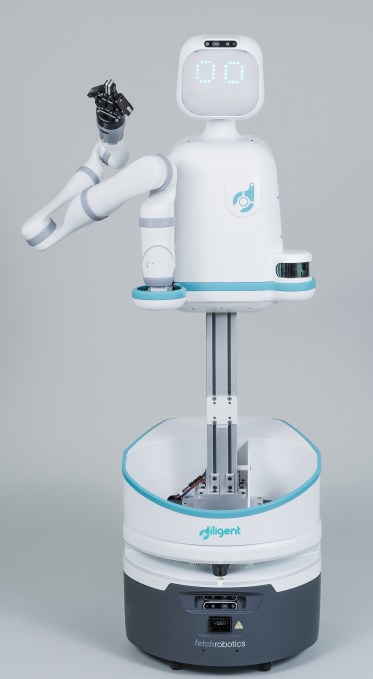 The round, led by DNX Ventures, brings Diligent Robotics to $15.75 million in total funding thatpropelled it to the fifth generation of its Moxi robot. It currently has two deployed in Dallas, Texas, but is already working with two of the three top hospital networks in the U.S. &As the current pandemic and circumstance has shown, the real heroes are our healthcare providers,& says Q Motiwala, partner at DNX Ventures. The new cash from DNX, True Ventures, Ubiquity Ventures, Next Coast Ventures, Grit Ventures, E14 Fund and Promus Ventures will help Diligent Robotics expand Moxiuse cases and seamlessly complement nurses& workflows to help alleviate the talent crunch.
The round, led by DNX Ventures, brings Diligent Robotics to $15.75 million in total funding thatpropelled it to the fifth generation of its Moxi robot. It currently has two deployed in Dallas, Texas, but is already working with two of the three top hospital networks in the U.S. &As the current pandemic and circumstance has shown, the real heroes are our healthcare providers,& says Q Motiwala, partner at DNX Ventures. The new cash from DNX, True Ventures, Ubiquity Ventures, Next Coast Ventures, Grit Ventures, E14 Fund and Promus Ventures will help Diligent Robotics expand Moxiuse cases and seamlessly complement nurses& workflows to help alleviate the talent crunch.
Thomaz came up with the idea for a hospital droid after doing her PhD in social robotics at the MIT Media lab. Her co-founder and CTO Vivian Chu had done a masterat UPenn on how to give robots a sense of touch, and then came to work with Thomaz at Georgia Tech. They were inspired by a study revealing how nurses spent so much time acting as hospital gofers, so in 2016 they applied for and won a National Science Foundation grant of $750,000 that funded a six-month sprint to build a prototype of Moxi.
Since then, 18-person Diligent Robotics has worked with hundreds of nurses to learn about exactly what they need from an autonomous assistant. &Today you will go about your day, and you probably won&t interact with any robots….we want to change that,& Thomaz tells me. &The only way you can really bring robots out of the warehouses, off of the factory floors, is to build a robot that can work in our dynamic and messy everyday human environments.& The startupintention isn&t to fully replace humans, which it doesn&t think is possible, but to let them focus on the most human elements of their jobs.
Moxi is about the size of a human, but designed to look like an &80s movie robot so as not to engender an uncanny valley cyborg weirdness. Its head and eyes can move to signal intent, like which direction itabout to move, while sounds let it communicate with nurses and acknowledge their commands. A moving pillar lets it adjust its height, while its gripper hand and arm can pick and put down smaller pieces of hospital equipment. Its round shape and courteous navigation makes sure it can politely share crowded hallways and travel via elevator.
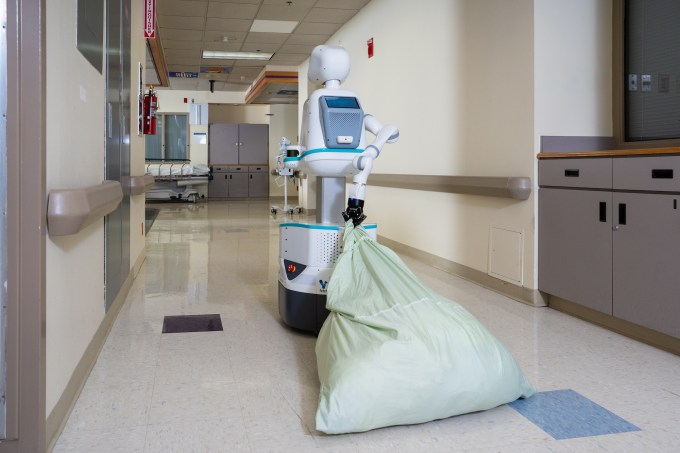
Diligent Robotics& solution engineers work with hospitals to teach Moxi how to get around and what they need. The company hopes to eventually build the ability to learn and adapt right into the bot so nurses can teach it new tasks on the fly. &The team continues to demonstrate unmatched robotics-specific innovation by combining social intelligence and human-guided learning capabilities,& says True Ventures partner and Diligent board member Rohit Sharma.
Hospitals pay an upfront fee to buy Moxi robots, and then therea monthly fee for the software, services and maintenance. Thomaz admits that &Hospitals are naturally risk-averse, and can be wary to take up new technology,& so the startup is taking a slow and steady approach to deployment so it can convince buyers that Moxi is worth the learning curve.
Diligent Robotics will be competing with companies like AethonTUG bot for pulling laundry and pharmacy carts. Other players in the hospital tech space include Xenexmachine that disinfects rooms with light, and surgical bots like those from Johnson - JohnsonAuris and Intuitive Surgical.
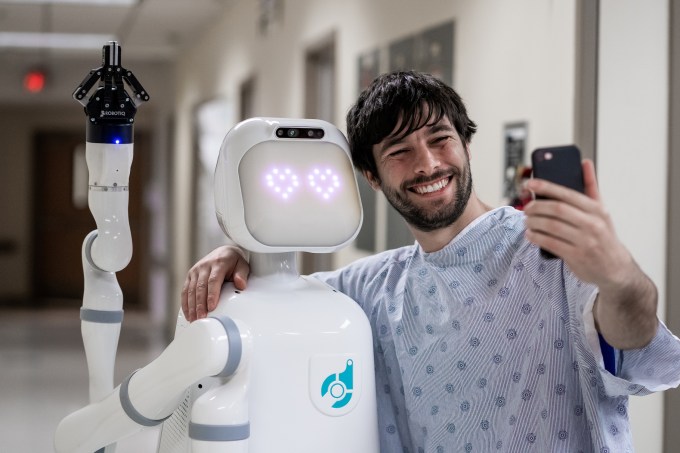
Diligent Robotics hopes to differentiate itself by building social intelligence into Moxi so it feels more like an intern than a gadget. &Time and again, we hear from our hospital partners that Moxi not only returns time back to their day but also brings a smile to their face,& says Thomaz. The company wants to evolve Moxi for other dull, dirty or dangerous service jobs.
Eventually, Diligent Robotics hopes to bring Moxi into peoplehomes. &While we don&t see robots replacing the companionship and the human connection, we do dream of a time that robots could make nursing homes more pleasant by offsetting the often staggering numbers of caretakers to bed ratios (as bad as 30:1),& Thomaz concludes. That way, Moxi could &help people age with dignity and hold onto their independence for as long as possible.&

- Details
- Category: Technology Today
Read more: Hospital droid Diligent Robotics raises $10M to assist nurses
Write comment (94 Comments)One of the obstacles to accurately estimating the prevalence of sickness in the general population is that most of our data comes from hospitals, not the 99.9 percent of the world that isn&t hospitals. FluSense is an autonomous, privacy-respecting system that counts the people and coughs in public spaces to keep health authorities informed.
Every year has a flu and cold season, of course, though this yearis of course far more dire. But itlike an ordinary flu season in that the main way anyone estimates how many people are sick is by analyzing stats from hospitals and clinics. Patients reporting &influenza-like illness& or certain symptoms get aggregated and tracked centrally. But what about the many folks who just stay home, or go to work sick?
We don&t know what we don&t know here, and that makes estimates of sickness trends — which inform things like vaccine production and hospital staffing — less reliable than they could be. Not only that, but it likely produces biases: Who is less likely to go to a hospital, and more likely to have to work sick? Folks with low incomes and no healthcare.
Researchers at the University of Massachusetts Amherst are attempting to alleviate this data problem with an automated system they call FluSense, which monitors public spaces, counting the people in them and listening for coughing. A few of these strategically placed in a city could give a great deal of valuable data and insight into flu-like illness in the general population.
Tauhidur Rahman and Forsad Al Hossain describe the system in a recent paper published in an ACM journal. FluSense basically consists of a thermal camera, a microphone, and a compact computing system loaded with a machine learning model trained to detect people and the sounds of coughing.
To be clear at the outset, this isn&t recording or recognizing individual faces; Like a camera doing face detection in order to set focus, this system only sees that a face and body exists and uses that to create a count of people in view. The number of coughs detected is compared to the number of people, and a few other metrics like sneezes and amount of speech, to produce a sort of sickness index — think of it as coughs per person per minute.
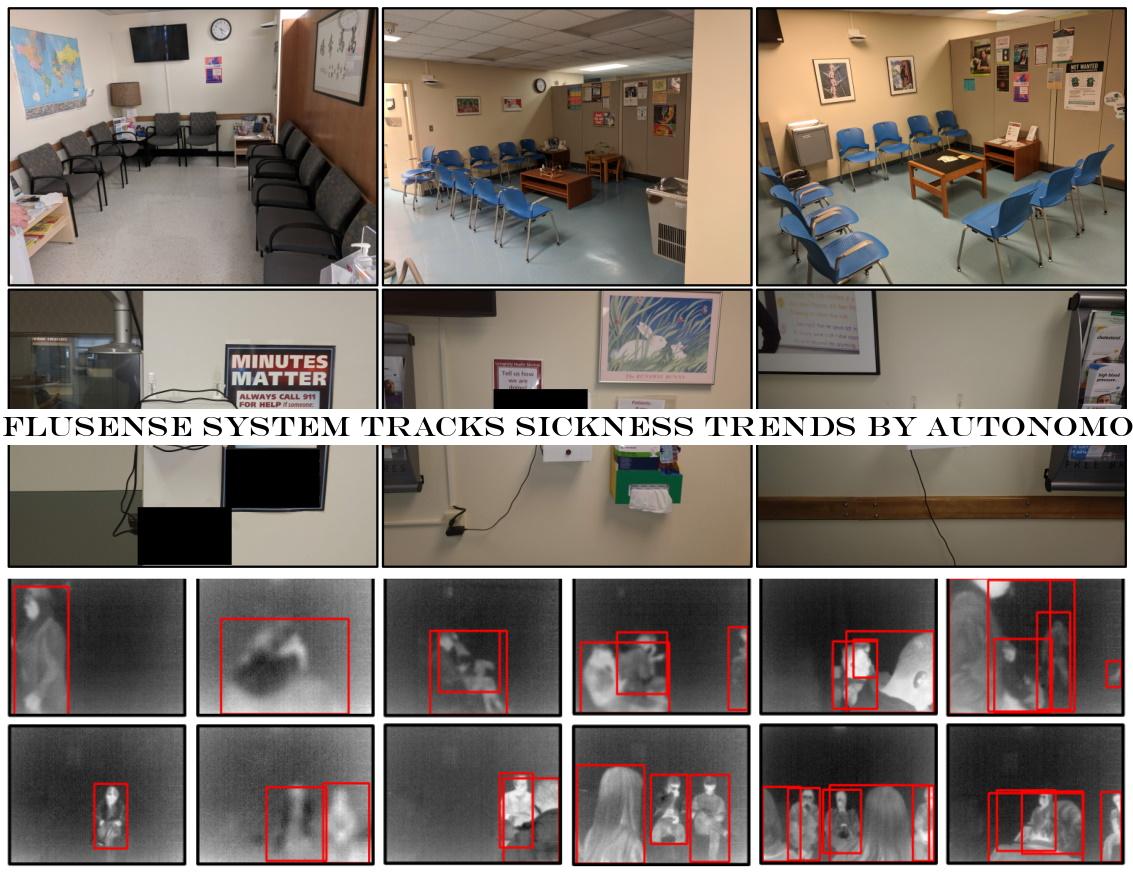
A sample setup, above, the FluSense prototype hardware, center, and sample output from the thermal camera with individuals being counted and outlined.
Sure, ita relatively simple measurement, but therenothing like this out there, even in places like clinic waiting rooms where sick people congregate; Admissions staff aren&t keeping a running tally of coughs for daily reporting. One can imagine not only characterizing the types of coughs, but visual markers like how closely packed people are, and location information like sickness indicators in one part of a city versus another.
&We believe that FluSense has the potential to expand the arsenal of health surveillance tools used to forecast seasonal flu and other viral respiratory outbreaks, such as the COVID-19 pandemic or SARS,& Rahman told TechCrunch. &By understanding the ebb and flow of the symptoms dynamics across different locations, we can have a better understanding of the severity of a novel infectious disease and that way we can enforce targeted public health intervention such as social distancing or vaccination.&
Obviously privacy is an important consideration with something like this, and Rahman explained that was partly why they decided to build their own hardware, since as some may have realized already, this is a system thatpossible (though not trivial) to integrate into existing camera systems.
&The researchers canvassed opinions from clinical care staff and the university ethical review committee to ensure the sensor platform was acceptable and well-aligned with patient protection considerations,& he said. &All persons discussed major hesitations about collection any high-resolution visual imagery in patient areas.&
Similarly, the speech classifier was built specifically to not retain any speech data beyond that someone spoke — can&t leak sensitive data if you never collect any.
The plan for now is to deploy FluSense &in several large public spaces,& one presumes on the UMass campus in order to diversify their data. &We are also looking for funding to run a large-scale multi-city trial,& Rahman said.
In time this could be integrated with other first- and second-hand metrics used in forecasting flu cases. It may not be in time to help much with controlling COVID-19, but it could very well help health authorities plan better for the next flu season, something that could potentially save lives.
- Details
- Category: Technology Today
Read more: FluSense system tracks sickness trends by autonomously monitoring public spaces
Write comment (94 Comments)
Doom Eternal on PC is finally out, after months of not having a huge tent-pole game release, and it really couldn't have come at a better time. Because we're all about to be spending a lot of time indoors, it's good to finally have such a great title to dig our teeth into for a while.
But if you're on PC, it can be nerve-wracking when you're
- Details
- Category: Technology Today
Read more: Doom Eternal PC performance: 4K60 with an Nvidia GeForce RTX 2060 Super
Write comment (98 Comments)Elon Musk tweeted Friday that Tesla and SpaceX employees are &working on ventilators& even though he doesn&t believe they will be needed.
His confirmation on Twitter that both of the companies he leads are working on ventilators comes a day after New York City Mayor Bill de Blasiomade a direct plea to Musk to help alleviate a shortage at hospitals gearing up to combat COVID-19.
Itunclear how many employees are working on the ventilators and which Tesla factory — it could be Buffalo, N.Y., Fremont, Calif., Sparks, Nev. or even Shanghai — has dedicated space to the project. The SpaceX facility is located in Hawthorne, Calif.
Musk didn&t describe what capacity would be or how long it might take to scale up such an endeavor. One Twitter follower recommended building one large ventilator with multiple branches and lines. Musk noted that a single computer, pump and pressure accumulator could do the job, but noted that individual valves per patient would be ideal.
Whatever Musk decides, his project still faces specific obstacles. Certified medical personnel will need to be involved in such an operation and ventilator hardware used in clinical settings still must be approved by the FDA, which could delay production.
Still, the need for ventilators is urgent, prompting other automakers to investigate ways of ramping up production. GM, Volkswagen and Ford have all reportedly either talked to the White House or committed to looking at the problem. Volkswagen said Friday it has created a task force to look into using 3D printing to make hospital ventilators.
De Blasio tweeted out his plea to Musk Thursday morning. &Our country is facing a drastic shortage and we need ventilators ASAP — we will need thousands in this city over the next few weeks. We&re getting them as fast as we can but we could use your help!&
The mayoroffice has reached out to the person who runs Muskfamily office, his communications director and his lobbyist, press secretary Freddi Goldstein toldTechCrunchin an email. &Given his response on Twitter, we&re hopeful he will be able to help,& Goldstein added
The COVID-19 pandemic had elicited a seemingly conflicting mix of responses from Musk. He has downplayed COVID-19 in emails to employees and on social media. In one company-wide email sent to SpaceX employees, Musk wrote that they have a higher risk of being killed in a car crash than dying from the coronavirus, BuzzFeed reported last week.
Since then, Musk wrestled with officials in Alameda County to keep TeslaFremont, Calif., factory open, in spite of a government directive to close all non-essential businesses. Tesla announced plans Thursday to suspend production there beginning March 23.
Some basic operations that would supportTesla&scharging infrastructure and what it describes as its &vehicle and energy services operations& will continue at the factory, which under normal circumstances employs more than 10,000 people. Tesla is also suspending operations at its factory in Buffalo, N.Y., except for &those parts and supplies necessary for service, infrastructure and critical supply chains,& the company said in a statement.
Musk has jumped into crises before with mixed results. In 2018, Musk and the Musk Foundation donated $480,350 to add ultraviolet water filtration systems and water stations to all 12 area schools in Flint, Mich. The effort was delayed but eventually the systems were installed, beginning in fall 2019.
In 2018, he put SpaceX engineers to work on a pod that could be used to save children trapped in a flooded cave in Thailand. Rescuers didn&t use the device and an argument with a cave diving expert that played out on social media and national television led to a defamation lawsuit, after Musk repeatedly called him &pedo guy.& Musk was found not liable for defamation in a federal court in 2019.

- Details
- Category: Technology Today
Read more: SpaceX and Tesla are ‘working on’ ventilators, Elon Musk says
Write comment (93 Comments)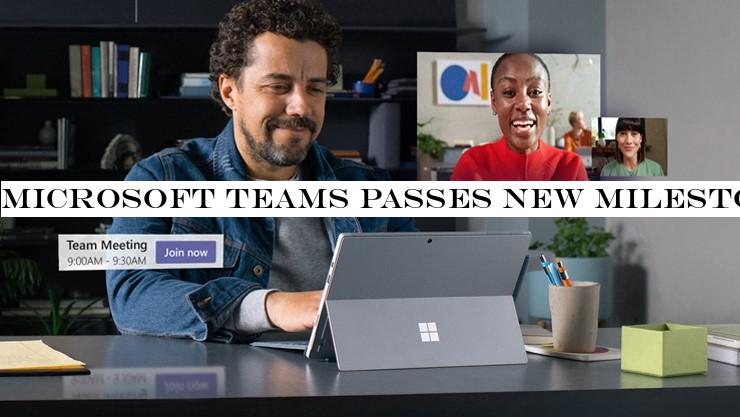

To commemorate the third anniversary of its workplace collaboration app, Microsoft has announced a number of new features that will be coming to Microsoft Teams later this year.
As many employees have been forced to stay at home recently, there has been a huge uptick in the number of people working remotely. Microsoft Teams, which hit 20m daily
- Details
- Category: Technology Today
Read more: Microsoft Teams passes new milestone, unveils raft of new features
Write comment (98 Comments)Page 1183 of 1447

 15
15





